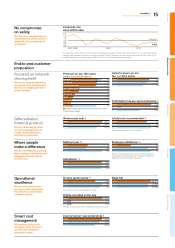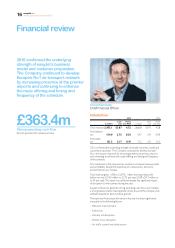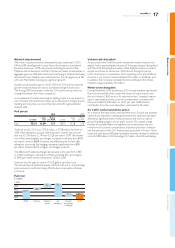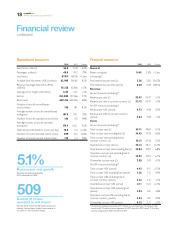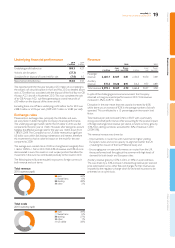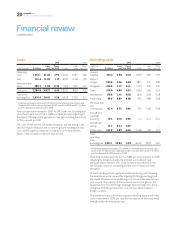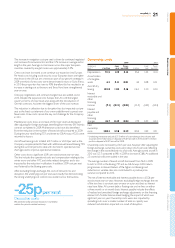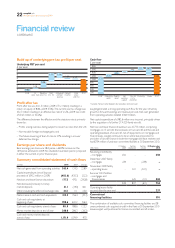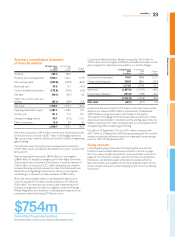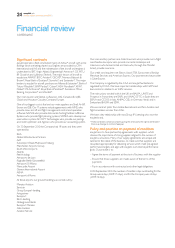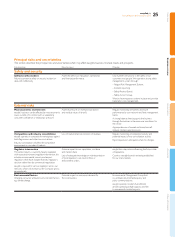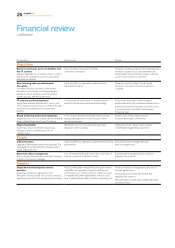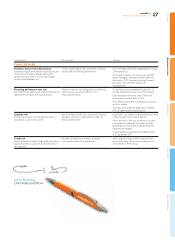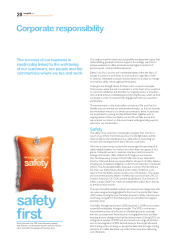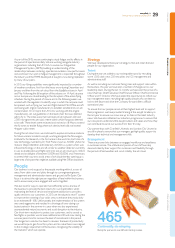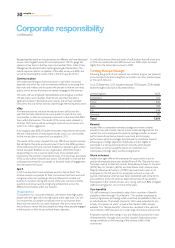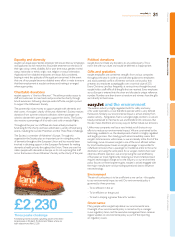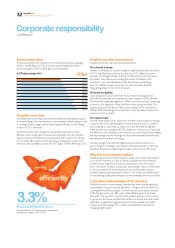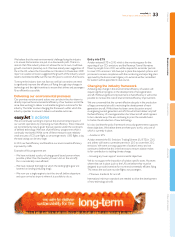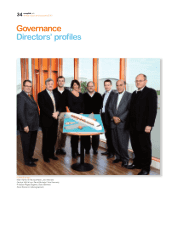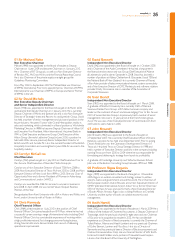EasyJet 2010 Annual Report Download - page 27
Download and view the complete annual report
Please find page 27 of the 2010 EasyJet annual report below. You can navigate through the pages in the report by either clicking on the pages listed below, or by using the keyword search tool below to find specific information within the annual report.
Principal risks and uncertainties
The section describes the principal risks and uncertainties which may affect easyJet’s business, nancial results and prospects.
Risk description Potential impact Mitigation
Safety and security
Safety/security incident
Failure to prevent a safety or security incident or
deal with it effectively.
Adversely affect our reputation, operational
and nancial performance. Our number one priority is the safety of our
customers and people. We operate a strong safety
management system through:
– Fatigue Risk Management System;
– Incident reporting;
– Safety Review Board;
– Safety Action Group.
We also have response systems in place and provide
training for crisis management.
External risks
Macroeconomic environment
easyJet’s business can be affected by macroeconomic
issues outside of its control such as weakening
consumer condence or inationary pressure.
Adverse pressure on revenue, load factors
and residual values of aircraft. Regular monitoring of markets and route
performance by our network and eet management
teams.
A strong balance sheet supports the business
through uctuations in the economic conditions for
the sector.
Appropriate mix of owned and leased aircraft
reduces residual value exposure.
Competition and industry consolidation
easyJet operates in competitive marketplaces against
both ag carriers and other low-cost airlines.
Industry consolidation will affect the competitive
environment in a number of markets.
Loss of market share and erosion of revenue. Regular monitoring of competitor activity and
potential impact of any consolidation activity.
Rapid response in anticipation of and to changes.
Regulator intervention
The airline industry is currently heavily regulated,
with expected increased regulator intervention; this
includes environmental, security and airport
regulation which have charges levied by regulatory
decision rather than by commercial negotiation.
easyJet is exposed to various regulators across our
network, which will increase as the Company grows
geographically.
Adverse impact to our reputation, cost base
and market share.
Lack of adequate knowledge or misinterpretation
of local regulations can result in nes or
enforcement orders.
easyJet has a key role in inuencing the future state
of regulations.
Country oversight boards are being established
for our main markets.
Environmental factors
Changing consumer attitude to environment factors,
e.g. climate change.
Potential impact on consumer demand for
the core business. Environmental Management Group that
co-ordinates environmental policy and
policycommunications.
easyJet operates modern, fuel-efcient
aircraftoperating at high capacity and ies
toconveniently located airports.
Overview Business review Governance Accounts Other information
25
easyJet plc
Annual report and accounts 2010


